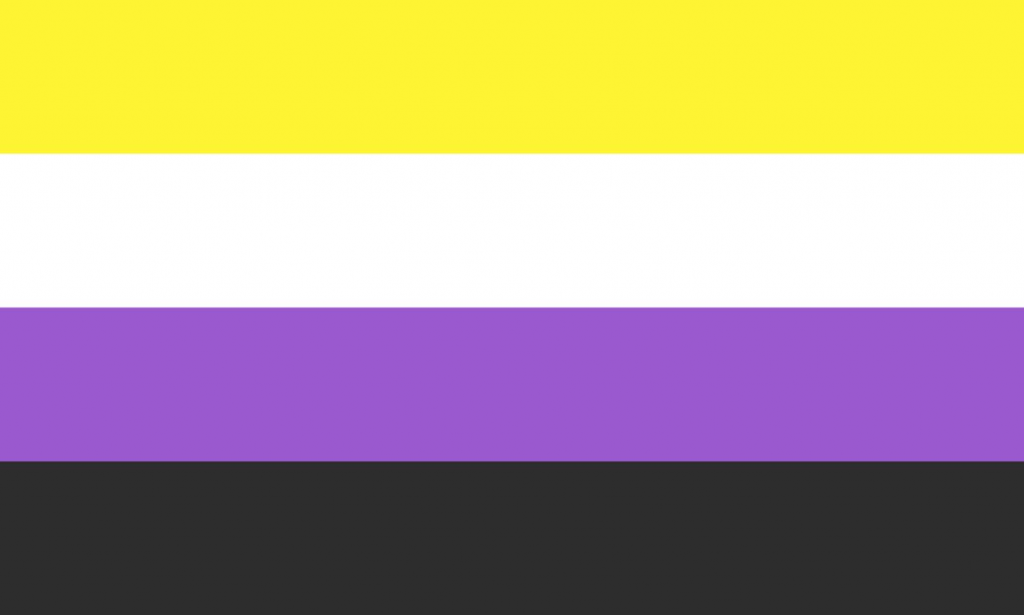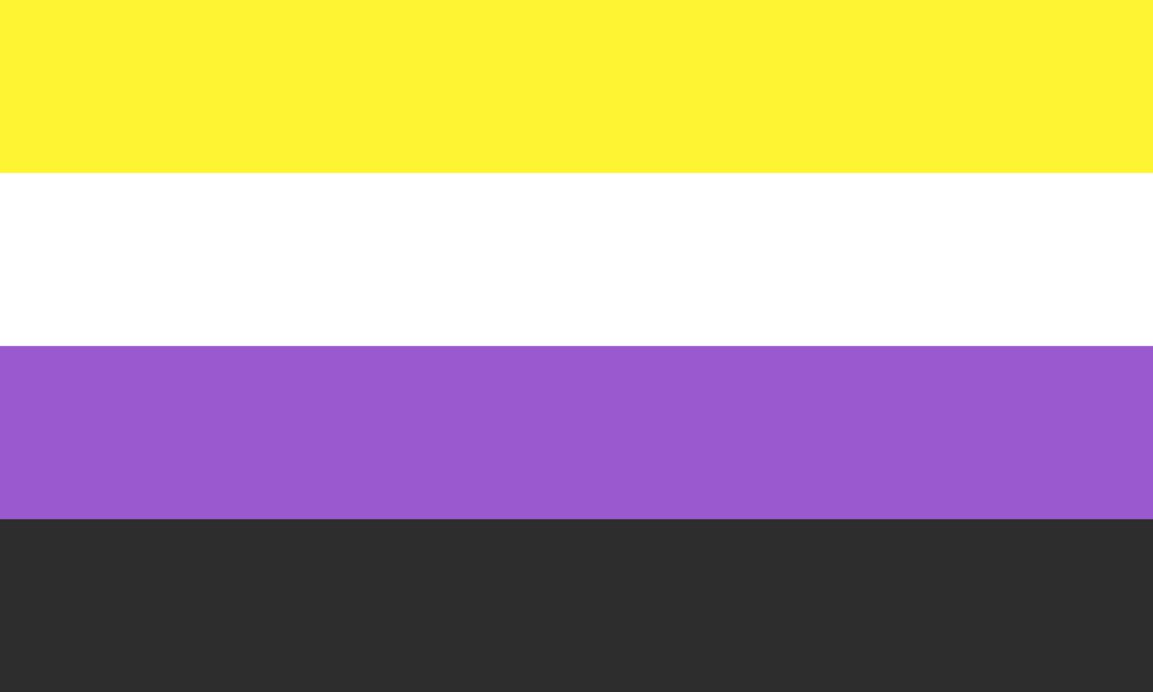Nonbinary is a term used to describe individuals who do not exclusively identify as male or female. It is a gender identity that falls outside of the traditional binary system of male and female, and instead encompasses a wide range of gender expressions and identities. In this article, we will explore what it means to be nonbinary, the challenges faced by nonbinary individuals, and ways to support the nonbinary community.
What is Nonbinary?
Nonbinary is an umbrella term used to describe individuals who identify as anything other than exclusively male or female. Nonbinary people may identify as both male and female, neither male nor female, a combination of genders, or a gender that is completely different from male or female.
Nonbinary individuals may use a variety of terms to describe their gender identity, including genderqueer, genderfluid, bigender, and agender. These terms reflect the diversity and complexity of nonbinary identities.
Nonbinary individuals may also express their gender identity in different ways, such as through clothing, hairstyles, or pronouns. Some nonbinary individuals may prefer to use gender-neutral pronouns like “they/them” or “ze/hir” instead of traditional gendered pronouns like “he/him” or “she/her.”
Challenges Faced by Nonbinary Individuals
Nonbinary individuals may face a variety of challenges related to their gender identity. These challenges can include discrimination, harassment, and a lack of understanding and acceptance from others.
One of the biggest challenges faced by nonbinary individuals is a lack of visibility and representation in society. Nonbinary identities are often overlooked or misunderstood, which can lead to a sense of isolation and erasure.
Nonbinary individuals may also face challenges related to accessing healthcare and other services. Many healthcare providers and institutions may not be equipped to provide appropriate care for nonbinary individuals, and may not understand the unique health needs and concerns of this population.
Supporting the Nonbinary Community
There are several ways to support the nonbinary community and promote greater understanding and acceptance of nonbinary identities. These include:
- Educate yourself about nonbinary identities and terminology. Take the time to learn about the different ways that nonbinary individuals may identify and express their gender identity.
- Use inclusive language. When speaking to or about nonbinary individuals, use their preferred pronouns and gender-neutral language when appropriate.
- Advocate for greater visibility and representation of nonbinary individuals in media and society. Encourage others to recognize and celebrate the diversity of gender identities.
- Support nonbinary individuals in accessing healthcare and other services. Advocate for greater inclusivity and understanding within healthcare systems and other institutions.
Conclusion:
Nonbinary is a gender identity that falls outside of the traditional binary system of male and female. Nonbinary individuals may identify as a combination of genders or a gender that is completely different from male or female. Nonbinary individuals may face challenges related to discrimination, lack of understanding and acceptance, and accessing healthcare and other services. By educating ourselves, using inclusive language, advocating for greater visibility and representation, and supporting nonbinary individuals in accessing services, we can promote greater understanding and acceptance of nonbinary identities.
History of Nonbinary
The concept of nonbinary gender identities has a long and complex history that spans many different cultures and societies. In this article, we will explore the history of nonbinary gender identities, from ancient times to the present day, and examine the ways in which nonbinary identities have been understood and expressed over time.
Ancient Cultures and Nonbinary Gender Identities
The concept of nonbinary gender identities can be traced back to many ancient cultures and societies. For example, many indigenous cultures in North America recognized the existence of individuals who did not fit neatly into the traditional binary gender system of male and female. These individuals were often recognized as having a special spiritual role in society and were respected for their unique perspectives and abilities.
In many other cultures, such as ancient Egypt and Mesopotamia, there are examples of individuals who were recognized as having both male and female characteristics, and who were often seen as having special talents or abilities as a result of their gender identity.
Colonization and the Suppression of Nonbinary Gender Identities
Despite the recognition and acceptance of nonbinary gender identities in many ancient cultures, the arrival of European colonizers and the spread of Christianity led to the suppression and erasure of these identities in many parts of the world.
Throughout much of the colonial period, nonbinary gender identities were condemned as sinful and unnatural, and many individuals who identified as nonbinary were subjected to violence, persecution, and discrimination.
The Emergence of Modern Nonbinary Identities
In the 20th century, the emergence of modern nonbinary gender identities began to challenge the traditional binary gender system. One of the earliest and most prominent examples of this was the emergence of the transgender movement, which sought to challenge the idea that gender is determined solely by one’s assigned sex at birth.
As the transgender movement gained momentum, it paved the way for the emergence of other nonbinary gender identities, such as genderqueer and genderfluid. These identities are now recognized as legitimate expressions of gender, and many nonbinary individuals have found a sense of community and belonging within these movements.
Challenges Faced by Nonbinary Individuals Today
Despite the growing recognition and acceptance of nonbinary gender identities, nonbinary individuals still face many challenges in society. These challenges can include discrimination, harassment, and a lack of understanding and acceptance from others.
Nonbinary individuals may also face challenges related to accessing healthcare and other services. Many healthcare providers and institutions may not be equipped to provide appropriate care for nonbinary individuals, and may not understand the unique health needs and concerns of this population.
History of Nonbinary Conclusion
The history of nonbinary gender identities is a long and complex one that spans many different cultures and societies. Although nonbinary identities have been suppressed and marginalized throughout much of history, the emergence of modern nonbinary identities has begun to challenge the traditional binary gender system and pave the way for greater acceptance and understanding of nonbinary identities. Despite the challenges faced by nonbinary individuals today, the growing recognition and acceptance of nonbinary identities represent an important step forward in the ongoing struggle for gender equality and liberation.
Non-binary flag
The non-binary flag is a symbol used to represent non-binary individuals and their identities. Non-binary people are those who do not identify strictly as male or female, and their gender identities may fall outside of the traditional gender binary, encompassing a wide range of experiences.
The non-binary flag consists of four horizontal stripes, each with a specific color and meaning:
- Yellow: Represents people whose gender exists outside of the binary, which includes those who are genderqueer, genderfluid, and other non-binary identities.
- White: Symbolizes individuals who identify as having multiple or many genders, such as bigender, polygender, or pangender.
- Purple: Represents the fluidity and diversity of the non-binary community, as well as the blending of traditionally male (blue) and female (pink) colors to create something entirely new.
- Black: Symbolizes individuals who identify as having no gender, also known as agender or genderless.
The non-binary flag serves as an important symbol of pride, visibility, and solidarity for non-binary individuals and their allies.

Share this article
